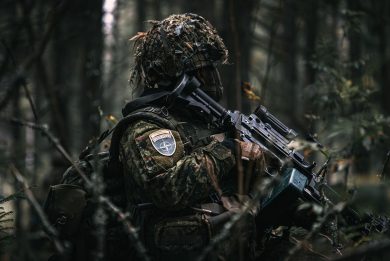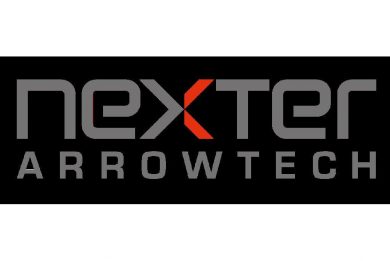
France: the Ministry of the Armies will soon receive reconnaissance micro robots
20/09/2019 – The Ministry of the Armies has just ordered 56 light robots, able to operate independently in order to listen, hear, see and record on the battlefield.
These robots will initially be tested by the General Armaments’ Directorate of (DGA) and will then be deployed by the Army, as part of Scorpion, the range of new generation armored vehicles which are gradually being delivered to the forces.
This order is the result of an innovative interaction between the military and the industry who worked in full cooperation, without barriers or rigidities.
Florence Parly welcomes this order which fulfills several objectives: fast and fluid orders processes on the one hand, and innovative equipment adapted to current operational issues on the other hand.
The Scorpion programme is essential for the Army, the Military Planning Law (LPM) 2019-2025 providing it the necessary resources: deliveries of the first Griffon armored vehicles have begun, and will be followed by those of the Jaguar and Serval armored vehicles.
The General Armaments’ Directorate (DGA) notified, on August 26, 2019, the NEXTER company, associated with ECA, the order for 56 Nerva® and Camaléon-LG® ground micro-robots. This first micro-robotics standard is part of the roadmap for the Scorpion programme, approved in May 2018 by the Minister of the Armed Forces, Florence Parly. It helps to better protect land warfighters in all types of environments by offering remote intervention capabilities against potential hazards.
These teleoperated ground micro-robots can be equipped with different modules making them adaptable to several types of mission. They will allow fighters from engineering and infantry units to collect precise information while remaining at a distance.
The order concerns three types of robots, all equipped with day/night cameras and a microphone:
• A Nerva®-S reconnaissance robot with a reduced footprint (3 kg), whose mobility allows it to cross small obstacles and to move in tight spaces indoor or outdoor. Robust, it can be launched over an obstacle and works indifferently on the back and on the belly.
• An extended Nerva®-LG reconnaissance robot (5 kg), which can be equipped with additional kits for mapping or enhanced observation at greater distances. With a remarkable mobility, this robot is able to climb stairs.
• A Nerva®-XX / Cameleon®-LG engineers robot (12 kg) produced by ECA and which, in addition to the capabilities of the extended reconnaissance robot, has an articulated arm allowing it to move or transport objects, i.e. to accurately locate charges to cope with an explosive device.
Small, discreet and resistant to jamming, these robots will be simply and quickly operated by a single fighter. They can work in a network and have two modes of communication, wireless and wired. The two largest robots have the ability to autonomously return to a predetermined point or to perform surveillance routines on defined trajectories. All three systems have growth potential allowing them to integrate in the future new technologies in the fields of autonomy, ergonomics or artificial intelligence.
This order is the result of an innovative acquisition process, conducted in less than one year by the teams of the DGA closely associated with those of the Army. To meet the challenge of quickly providing the forces with the first robotics capacity at the best technological level, a competitive dialogue has been conducted with the industry. The expressed need has been voluntarily specified in a rather open way to leave all its place to the industrial offer and to limit the risks of over-specification or dead ends. Intense exchanges between the DGA, the industry and the Army in a project-platform guaranteed an optimal understanding of the need.
The selection process for the candidates has been gradual and the in situ evaluations of the materials on concrete cases of use have been carried out jointly by the teams DGA Land Techniques, the STAT (Technical Section of the Army) and the SIMMT (Integrated Structure of the Operational Maintenance of Land Equipment). This ensures the consistency and end-to-end efficiency of the process to quickly meet the operational need.
Unofficial translation by EDR On-Line
Photo courtesy Nexter



